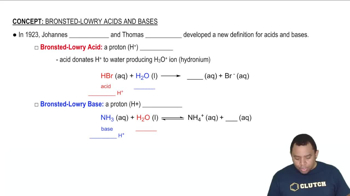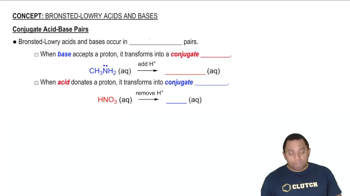Here are the essential concepts you must grasp in order to answer the question correctly.
Acid-Base Theory
Acid-base theory explains the behavior of acids and bases in chemical reactions. According to the Brønsted-Lowry theory, acids are proton donors while bases are proton acceptors. Understanding this concept is crucial for determining the strength of bases in given pairs, as it allows for the evaluation of their ability to accept protons.
Recommended video:
Bronsted-Lowry Acid-Base Theory
Conjugate Acid-Base Pairs
Conjugate acid-base pairs consist of two species that differ by the presence of a proton (H+). The strength of a base can often be inferred from its conjugate acid; a weaker conjugate acid corresponds to a stronger base. This relationship is essential for comparing the strength of bases in the provided pairs.
Recommended video:
Conjugate Acid-Base Pairs
Electronegativity and Stability
Electronegativity refers to the tendency of an atom to attract electrons in a bond. In the context of bases, a more electronegative atom can stabilize negative charge better, making the corresponding base weaker. Evaluating the electronegativity of atoms in the anions helps determine which base is stronger in each pair.
Recommended video:

 Verified step by step guidance
Verified step by step guidance

